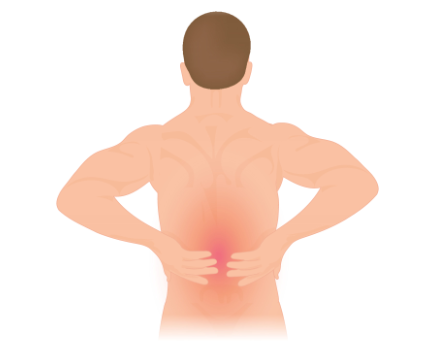

Symptoms
The cause of the back pain is directly linked with the location of the pain. If there is a chance that you have a vertebral compressive fracture, you will feel an intense pain in the middle area of your lower back, which worsens when pressure is applied to it.
Your lower back pain may be linked with sciatica if you have disc disease or facet joint syndrome. The pain may increase if you bend backward or twist. The lower back pain caused by strain is usually because of spinal canal stenosis or instability.
Diagnosis
There are many ways which your doctor can use to diagnose lower back pain and its cause in you. He can use medical imaging techniques like X-ray, CT, or MRI to locate the illness and its cause. He may also clinically examine you and also ask for your medical history. The diagnostic technique, which is commonly used for lower back pain, is electromyography. This method monitors the electrical activity of your skeletal muscles and identifies the location where the pain is radiating.
Treatment
In many cases, the first treatment option for this condition will be a conventional treatment such as physical therapy, vertebral fracture therapy, and epidural steroid injections. Your doctor may also recommend brace support for remediating instability and non-steroidal anti-inflammatory drugs to relieve the pain.
Minimally invasive treatments are also available to treat lower back pain. The minimally invasive therapies involve vertebroplasty or vertebral augmentation for VCF. The use of radiofrequency denervation for facet joint syndrome is also common. Your doctor may use screws to treat lower back pain caused by facet arthrodesis and disc decompression for relieving pain caused by a contained disc herniation.
The vertebroplasty success rate is 93%, according to the reported cases of lower back pain so far. For disc decompression, the success rate is 79%, and for RF neurotomy, the success rate stands at 75%. These success rates are measured by the amount of pain reduction experienced by the patient.
If any of these treatments are not working to reduce lower back pain in any patient, the last resort is surgery.
Dr Nikolas Charalambous is named among the most prominent interventional radiologist. Get a free consultation for a minimally invasive treatment of brain, neck, and spine.